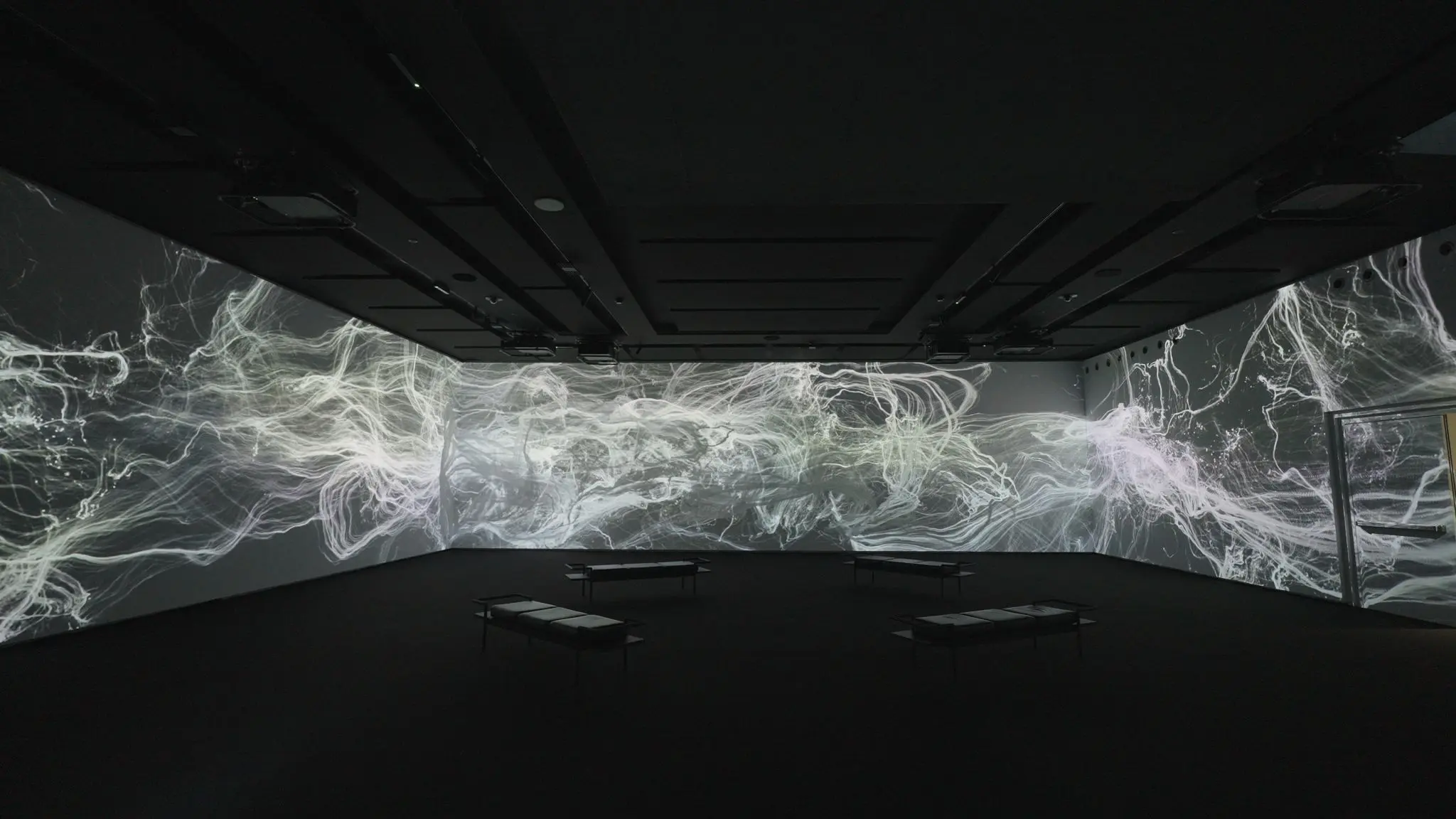MATERIALS.
THE SHAPE OF TIME
A new permanent exhibition that explores the connection between materials and time in Ancient Egypt, combining research, technology, and design to offer an immersive and accessible experience for all.
Client:
YEAR:
2024
#motiondesign #animation #3Dprinting
THE CHALLENGE: STORIES OF THE PAST
For the bicentennial of the Museo Egizio of Turin, theMaterials. The Shape Of Time exhibition was born—a permanent installation that transcends traditional storytelling.
By blending advanced digital techniques with the timeless narrative of ancient craftsmanship, the exhibition offers visitors a dynamic experience of materials such as wood, pigments, ceramics, and stone, spanning from the Predynastic period to Byzantine times.
This ambitious project highlights the collaboration between historical research and modern technology, bringing history to life through videos, 3D models, and motion graphics.
THE BRIEF
The Museum’s brief was as demanding as it was inspiring. Seven videos, two video mappings, and 3D-printed resin replicas of ancient vases were required.
The aim? To craft educational content that communicated complex archaeological findings in an accessible and engaging way while preserving the authenticity of the artifacts and maintaining a coherent visual identity throughout the exhibition.
Key Goals:
- Translate scientific data into visually compelling content.
- Maintain a consistent visual language across diverse media.
- Offer an interactive, multisensory experience for all visitors, including those with visual impairments.
NARRATIVE DEVELOPMENT
The storytelling process began with a deep dive into the curator’s brief.
From there, our team embarked on creating scripts, storyboards, and animations that would resonate with the museum’s audience.
Each video was crafted to distill dense academic information into concise, visually rich narratives.
One standout technique was split-screen storytelling, suggested by curator Enrico Ferraris.
This approach enabled the juxtaposition of visuals and animations, reducing the need for extensive text while maintaining clarity. The result was a fluid narrative that honored the museum’s historical depth while engaging a modern audience.
INNOVATIVE APPROACHES
The exhibition, designed to provide a multisensory experience, used cutting-edge techniques to present ancient artifacts in a new and engaging way.
Split Screen: To efficiently communicate intricate concepts, split-screen animations allowed simultaneous display of explanatory graphics and artifact visuals. This method maximized screen real estate, condensed video duration, and provided a cohesive aesthetic.
3D-Printed Artifacts: Using photogrammetry and high-resolution 3D printing, we recreated eight ancient vases in resin. Visitors could touch these replicas, feeling the imperfections and wear of the originals—bridging the gap between visual appreciation and tactile exploration.
Video Mapping: A highlight of the exhibition was the ceiling projection replicating the vibrant motifs from Wahka II’s tomb, blending the textures of ancient stone with the flowing appearance of fabric, evoking the ancient belief that such ceilings represented tents for the afterlife.
Multimedia Content: The exhibition’s videos ranged from detailed analyses of wooden artifacts to the poetic exploration of pigment origins. For example:
-
- Color Theory: A vibrant video delved into the symbolic and practical uses of pigments, enriched with 3D animations created in Blender.
- Woodwork Analysis: Combining X-ray imagery and photogrammetry, this piece explored the intricate craftsmanship behind wooden artifacts.
- Statue of Hathor: Leveraging data from the Polytechnic University of Turin, we visualized the statue’s inner structure using ultrasound and radar measurements.
CHALLENGES AND SOLUTIONS
Challenge 1: Balancing Depth with Accessibility
The museum required minimal text in the videos to maintain focus on the visuals. Condensing vast scientific data into succinct, engaging visual content was a complex task.
Solution: The split-screen technique and carefully planned animations simplified the delivery of information without oversimplifying the subject matter.
Challenge 2: Ensuring Visual Consistency Across Media
The variety of materials, colors, and exhibit styles posed a risk of visual dissonance.
Solution: A unified design language, from color palettes to motion graphics, ensured that each video complemented the exhibition’s artifacts.
Challenge 3: Tight Deadlines
The team had just one month to produce all content.
Solution: Assigning each team member full responsibility for specific videos encouraged adaptability and skill acquisition, fostering an efficient workflow.
THE FINAL EXPERIENCE
The completed exhibition is a harmonious blend of history and innovation. Visitors are greeted with:
- Interactive Videos: Seven videos covering topics from color theory to artifact construction.
- Video Mapping Installations: Immersive projections that bring ancient tombs to life.
- Tactile Displays: Resin vases invite hands-on exploration, fostering deeper connections to history.
Audience Impact:
Visitors have praised the exhibition for its clarity, engagement, and sensory appeal. Curator Enrico Ferraris and museum staff expressed satisfaction with the outcome, as evidenced by positive media coverage and social media engagement.


